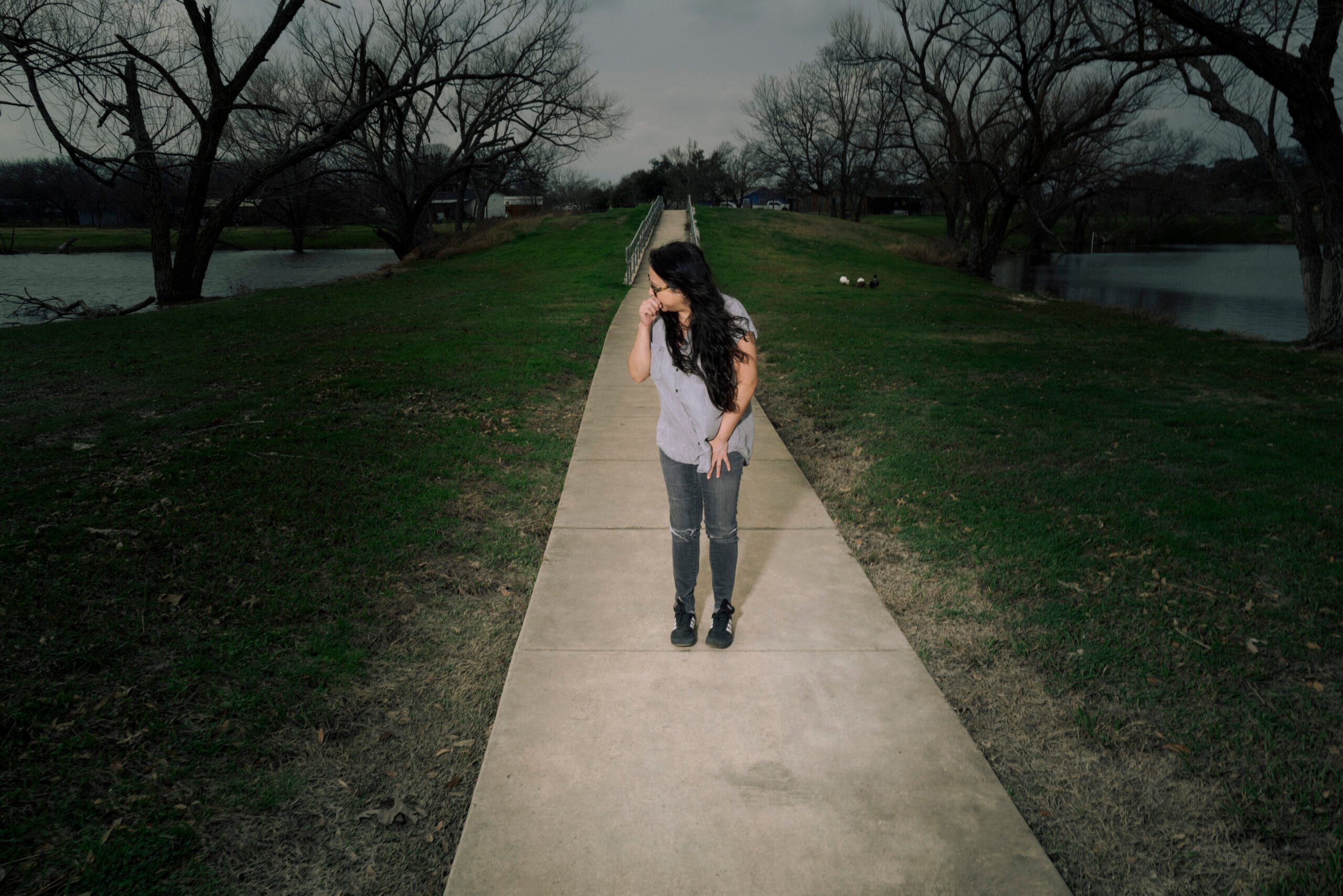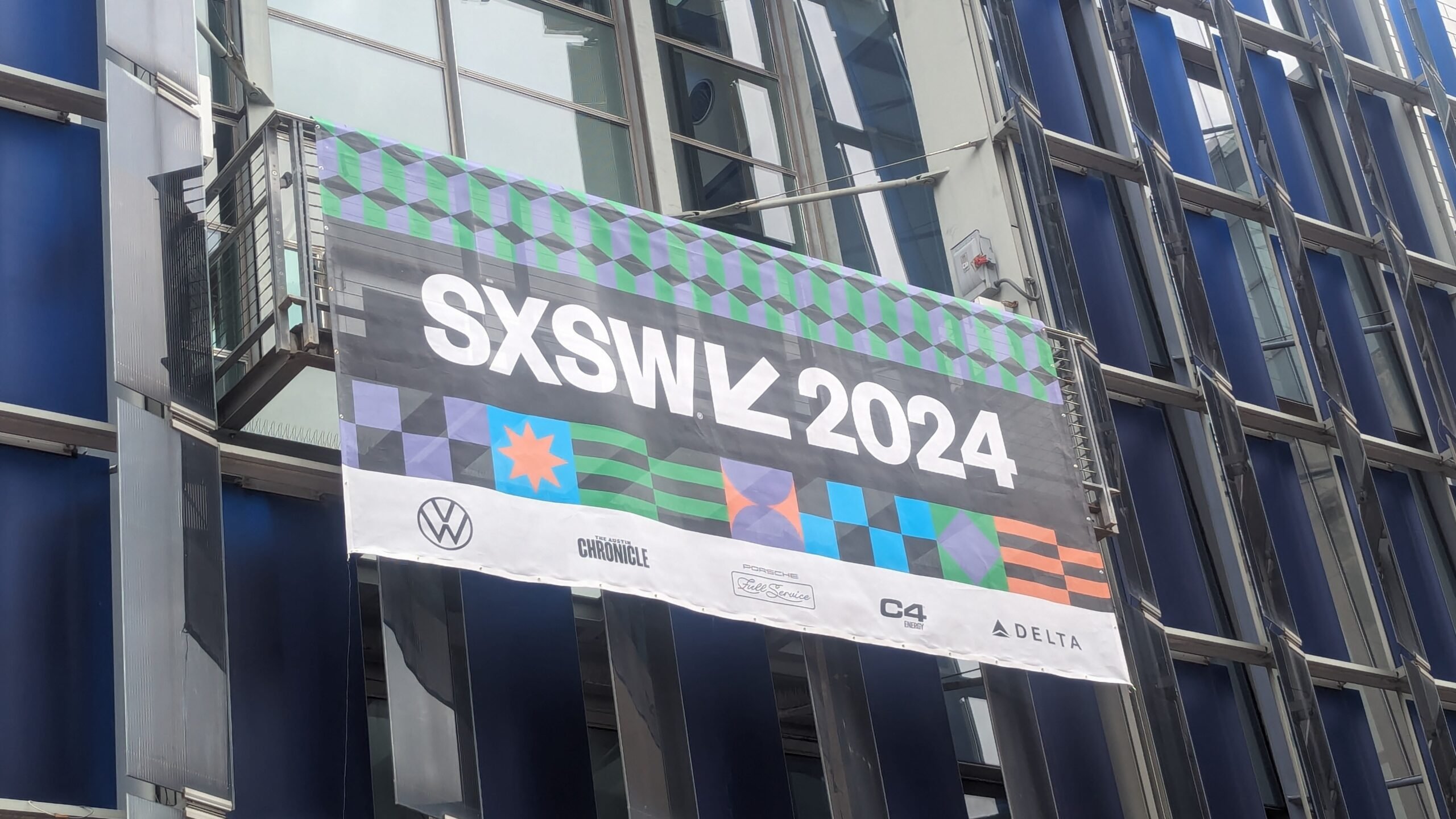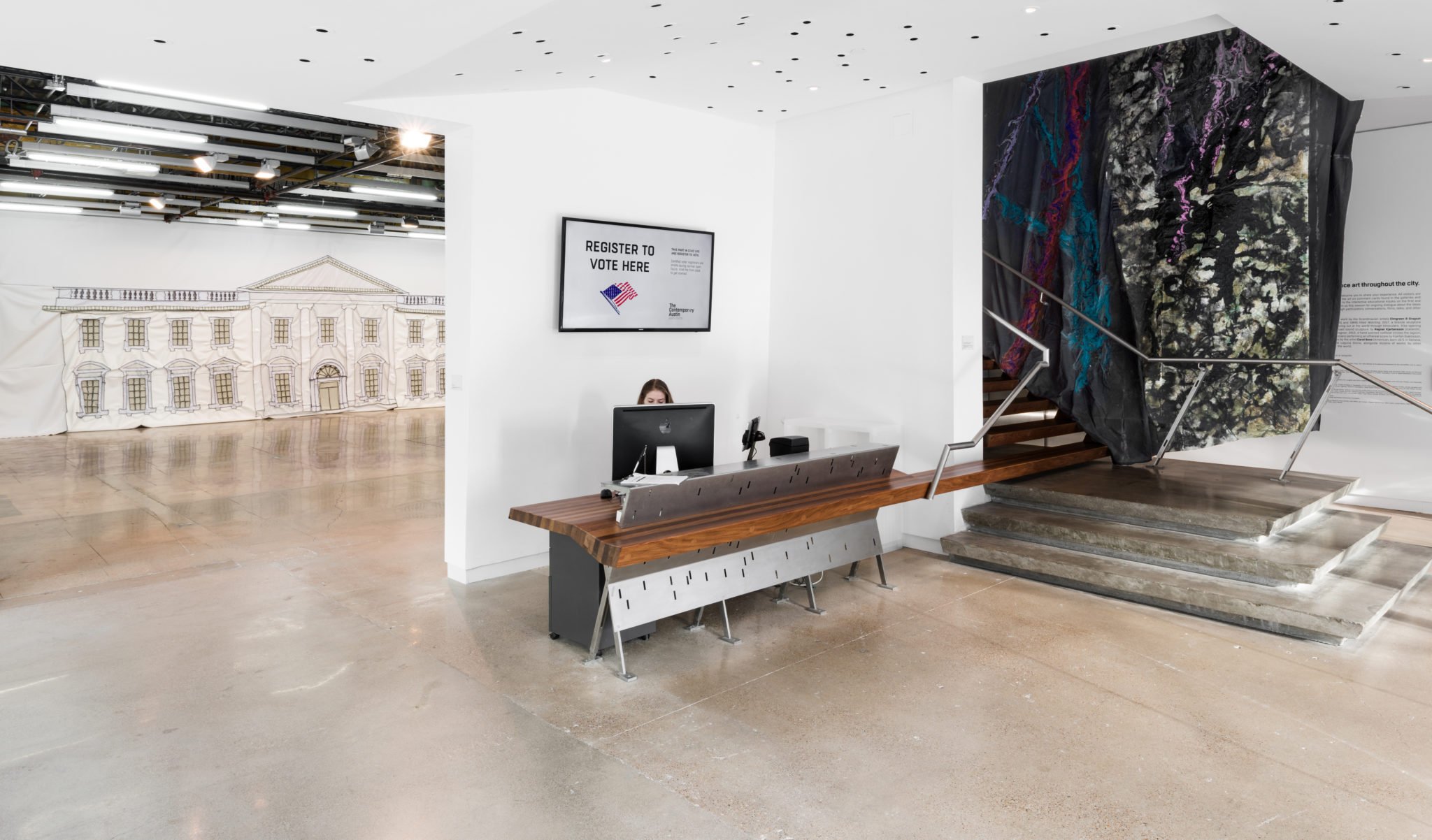
Artist Rodney McMillian Wants Viewers to Grapple with Race — and Register to Vote
From a 2-D White House to a video juxtaposing the KKK and the Texas Capitol, McMillian’s conceptual art is symbolic yet cryptic.
Above: Rodney McMillian: Against a Civic Death, The Contemporary Austin — Jones Center on Congress Avenue
The first thing you see as you walk into the latest exhibit at the Contemporary Austin is a voter registration desk. A small digital flag and the words “REGISTER TO VOTE HERE” are displayed on a screen. It’s not a piece of art; the woman sitting at the desk is a certified voter registrar. The station was installed for Rodney McMillian’s exhibit, Against a Civic Death, to carry out its titular duty. In other words, to fully engage with the work, you must vote.
The immersive installation is a result of nearly two years of work by McMillian, who was born in South Carolina and now lives in Los Angeles. He’s the first recipient of the Suzanne Deal Booth Art Prize, created in part to raise the profile of Austin’s art community. With a total value recently raised to $800,000, it’s now one of the biggest prizes in the art world.
On view at the Jones Center through August 26, Against a Civic Death is McMillian’s most ambitious and explicitly political work to date. A conceptual artist, he’s known for using found objects — couches, fridges, fabric — to examine U.S. history.
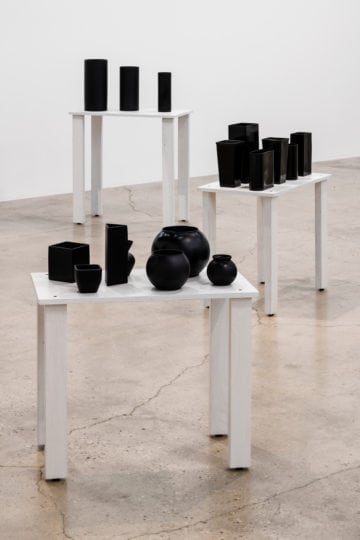
After passing the voter registration desk, visitors choose between staying on the same floor to see something familiar — a likeness of the White House — or climbing the stairs, flanked by a large abstract painting with splashes of color. Upstairs, the voice of Shirley Chisholm, the first black woman to run for president, is amplified through speakers into a room filled with black ornamental vases atop white tables.
McMillian says this hierarchy was intentional. “Polynesian and African art is always at the bottom. [Museums] are always organized this way,” he explained over the phone. “I decided to make a different arrangement. I wanted Shirley at the top and I wanted ideas of white supremacy at the bottom.”
I headed toward The White House Painting first. Despite the title, it’s not painted, but top-stitched in a black-and-white cartoonish outline. McMillian’s vinyl White House — readymade, reductive, two-dimensional — is, like everything in this exhibition, rich in symbolism, but most striking in its hollowness: Slip underneath its curtain and you’re shrouded in a small theater, a space so dark that I bumped into someone.
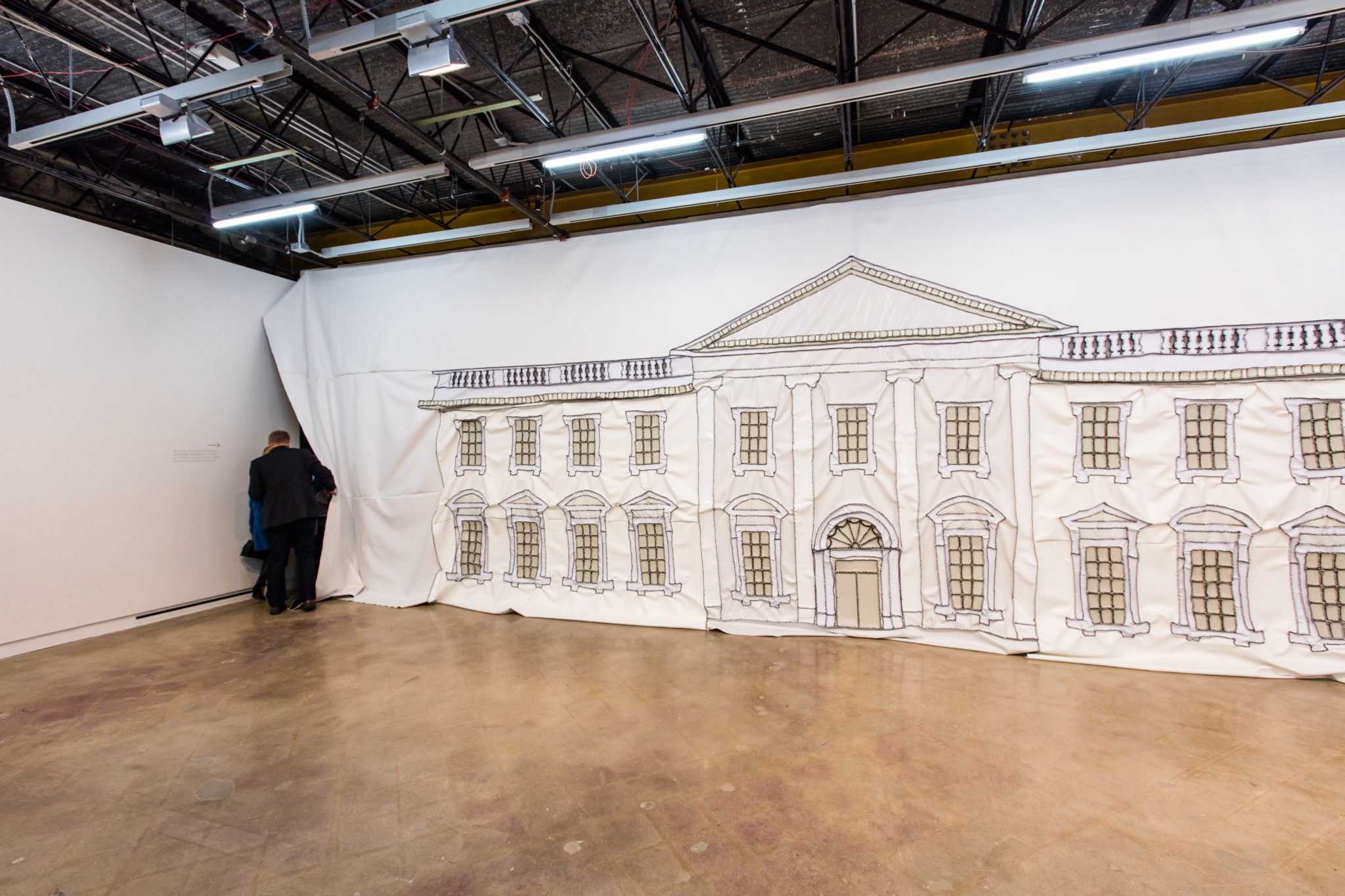
The only source of light is a film playing on loop. Called Untitled (neighbors), it was shot near the Texas Capitol. Four silent figures dressed in Klan-like robes move, dance and beat the ground for almost 20 minutes. I couldn’t sit through its monotony. But I got the point: Behind the shell of democracy are the pillars of white supremacy.
The abstract painting lining the staircase wall outside is less straightforward. When we spoke, McMillian gave me a hint. The coordinates in its title, 44.8617° N, 93.5606° W: coordinates to an ascension, are of Paisley Park, Prince’s Minnesota home and studio.
Growing up in the 1980s, McMillian said, his entree into visual art was watching Prince’s music videos. He now uses Prince symbolically to shuttle viewers from a history of white supremacy to his imagining of black futures, though it’s unclear exactly how those coordinates are figured through the painting’s branches of white, pink and blue on black cloth.
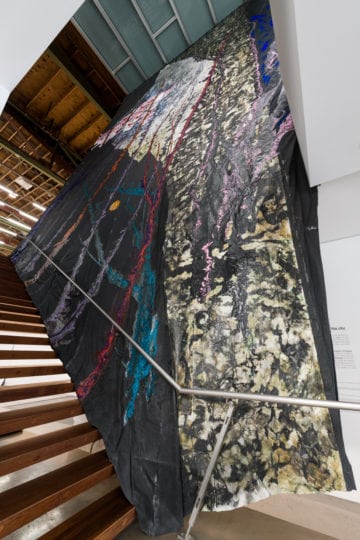
McMillian made the installation in 2016, thinking about the presidential election and Chisholm’s campaign. “My family loved what she stood for and her messages … The ideas she was espousing are ideas we are still working on to now.” Chisholm was the first person he thought of when he received the prize funding his exhibition, he said.
At McMillian’s artist talk last month, one audience member suggested that the distinctly shaped vases represented the different facets of blackness — a reading McMillian neither confirmed nor denied. I focused on Chisholm’s message, its sound literally resonating in containers that represent black people. Others might focus on the white tables, which elevate but also immobilize.
McMillian is interested in the varying effect his symbolic yet cryptic conceptual art has on people from different backgrounds. During the talk, he discussed a 2012 film, A Song for Nat, that he made at a Mississippi plantation based on the slave-revolt leader Nat Turner. Before shooting that film, he showed up on the plantation wearing a Hazmat suit and carrying an axe, frightening a man in the wooded distance. “He was a little nervous,” McMillian said. “If his wife had seen me, she probably would have shot me.” The curator of that work only told them to expect a performance artist.
Art so steeped in history and politics could be perceived as a sort of activism. For McMillian, even in the most bucolic pastoral scene, art is inherently political. “Modernism has a long history of art for art’s sake,” he said. “I’ve made work aware of that, but also hoping to challenge that.”

